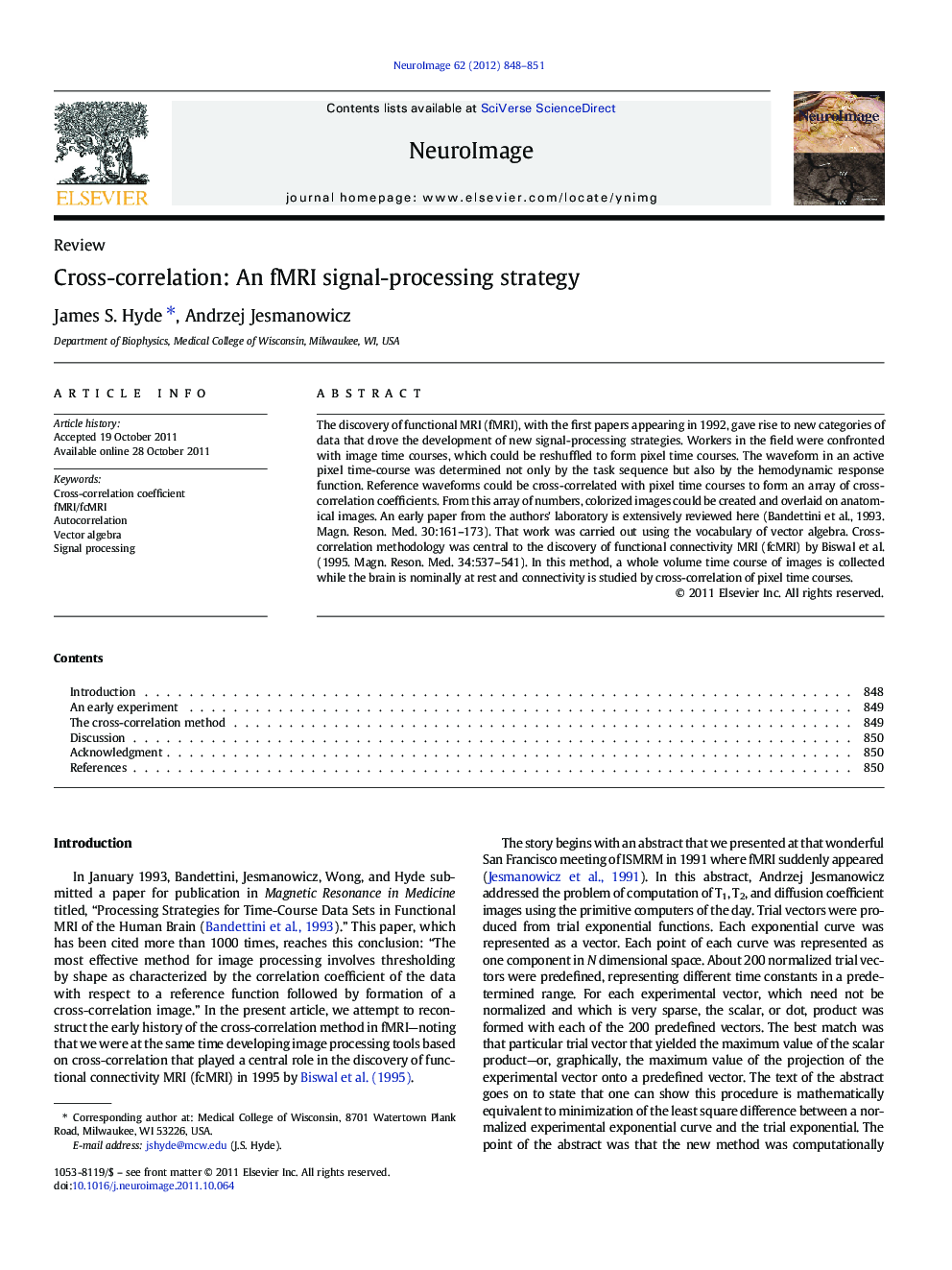| Article ID | Journal | Published Year | Pages | File Type |
|---|---|---|---|---|
| 6031631 | NeuroImage | 2012 | 4 Pages |
Abstract
The discovery of functional MRI (fMRI), with the first papers appearing in 1992, gave rise to new categories of data that drove the development of new signal-processing strategies. Workers in the field were confronted with image time courses, which could be reshuffled to form pixel time courses. The waveform in an active pixel time-course was determined not only by the task sequence but also by the hemodynamic response function. Reference waveforms could be cross-correlated with pixel time courses to form an array of cross-correlation coefficients. From this array of numbers, colorized images could be created and overlaid on anatomical images. An early paper from the authors' laboratory is extensively reviewed here (Bandettini et al., 1993. Magn. Reson. Med. 30:161-173). That work was carried out using the vocabulary of vector algebra. Cross-correlation methodology was central to the discovery of functional connectivity MRI (fcMRI) by Biswal et al. (1995. Magn. Reson. Med. 34:537-541). In this method, a whole volume time course of images is collected while the brain is nominally at rest and connectivity is studied by cross-correlation of pixel time courses.
Related Topics
Life Sciences
Neuroscience
Cognitive Neuroscience
Authors
James S. Hyde, Andrzej Jesmanowicz,
